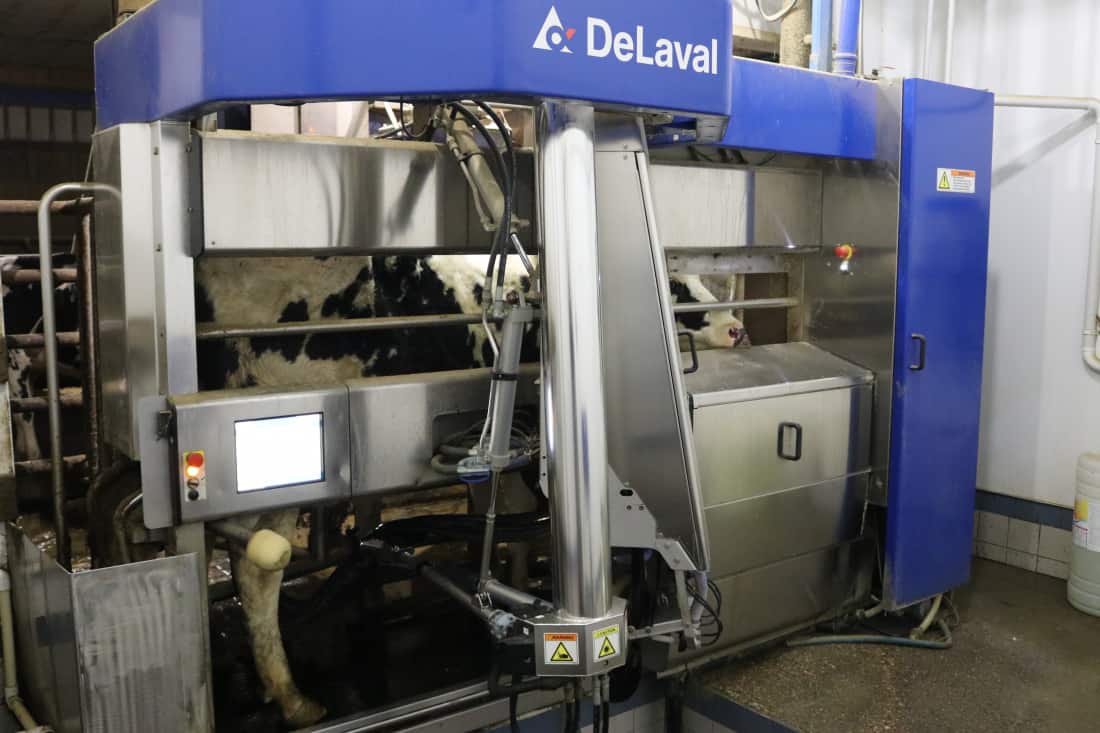
For centuries, farmers have acquired new technologies to help them increase overall yields, improve the quality of their product and make farming a little easier. It was only 1917 when tractors were first introduced in Canada, thereby replacing oxen and horses for work. And in the late 1950s, shipping containers and transportation sped up the supply chain, so producers could get their products to consumers even quicker.
However, farmers in the 21st century are facing their biggest challenge yet — feeding and clothing almost 10 billion people while facing the prospect of using less land and fewer resources by 2050. New advancements such as robots and drones are meeting this grand challenge while improving food production and increasing profitability.
Precision agriculture has dramatically changed how producers grow and harvest crops in Canada. GPS-based production has allowed farmers to accurately seed and apply fertilizer and pesticides to fields with up to one centimetre of accuracy. This reduces the risk of over applying or under applying fertilizer in certain areas in fields.
Drones have also made their introduction into the crop production world. By simply flying a drone over a field, farmers can pinpoint areas of their crop that are suffering from insect infestations or a lack of water.
In Australia and Central America, drones are being used to deliver pesticides to areas in crops that are struggling rather than applying them to the entire field, dramatically decreasing the use of pesticides. Drone spraying isn’t as popular in Canada at the moment. However, expect to see drones spraying fields in a few years’ time.
Technology has improved milk and meat production as well. In the dairy industry, robots have revolutionized the way dairy cattle are milked, fed and cleaned. Robotic milking stations have been around for 20 years. Instead of the farmer milking the cows twice daily, the robot now milks the cows for the farmer, giving cows the freedom to milk as many times as they choose, sometimes even four times a day.
Robotic milking has also increased animal health, decreased animal stress and increased longevity. Increased milkings and reduced stress lead to increased milk yields — and an increase in profits. If you want to see a robotic milking station in action, visit the Rayner Dairy Research and Teaching Facility on campus where they use a robotic milking station to milk part of the herd.
Additionally, dairy farmers use automated feed-delivery systems. These robots prepare and deliver feed to cows, pushing it up for them so that they have fresh feed at all times of the day. There are even robotic manure scrapers that clean alleyways in barns, which in turn keeps the cows cleaner.
In addition to robots, many dairy farmers are using animal-activity trackers on their cows — the animal version of a Fitbit. Cows are more active during the estrus period of their reproductive cycle — the time when they are ready to breed. Being able to monitor a cow’s activity level at all times has helped farmers decide the best time to breed their cows.
Another piece of technology that is making the rounds in both the beef and dairy industries is the Moocall. A Moocall is a device that is secured onto a pregnant cow’s tail to measure her contractions prior to calving. If the Moocall determines she is 30 to 60 minutes away from calving, it will send a text message to the farmer, so they can prepare for the calf ’s arrival and assist with the calving if need be.
Drones and robots are not just for entertainment anymore. This technology is helping farmers to increase yields, improve efficiency, reduce unnecessary pesticide use and improve animal welfare. This new technology is essential for farmers to overcome challenges and meet their long-term goals.
—
Emma Van Steekelenburg
Photo: Marylene Van Steekelenburg / Supplied